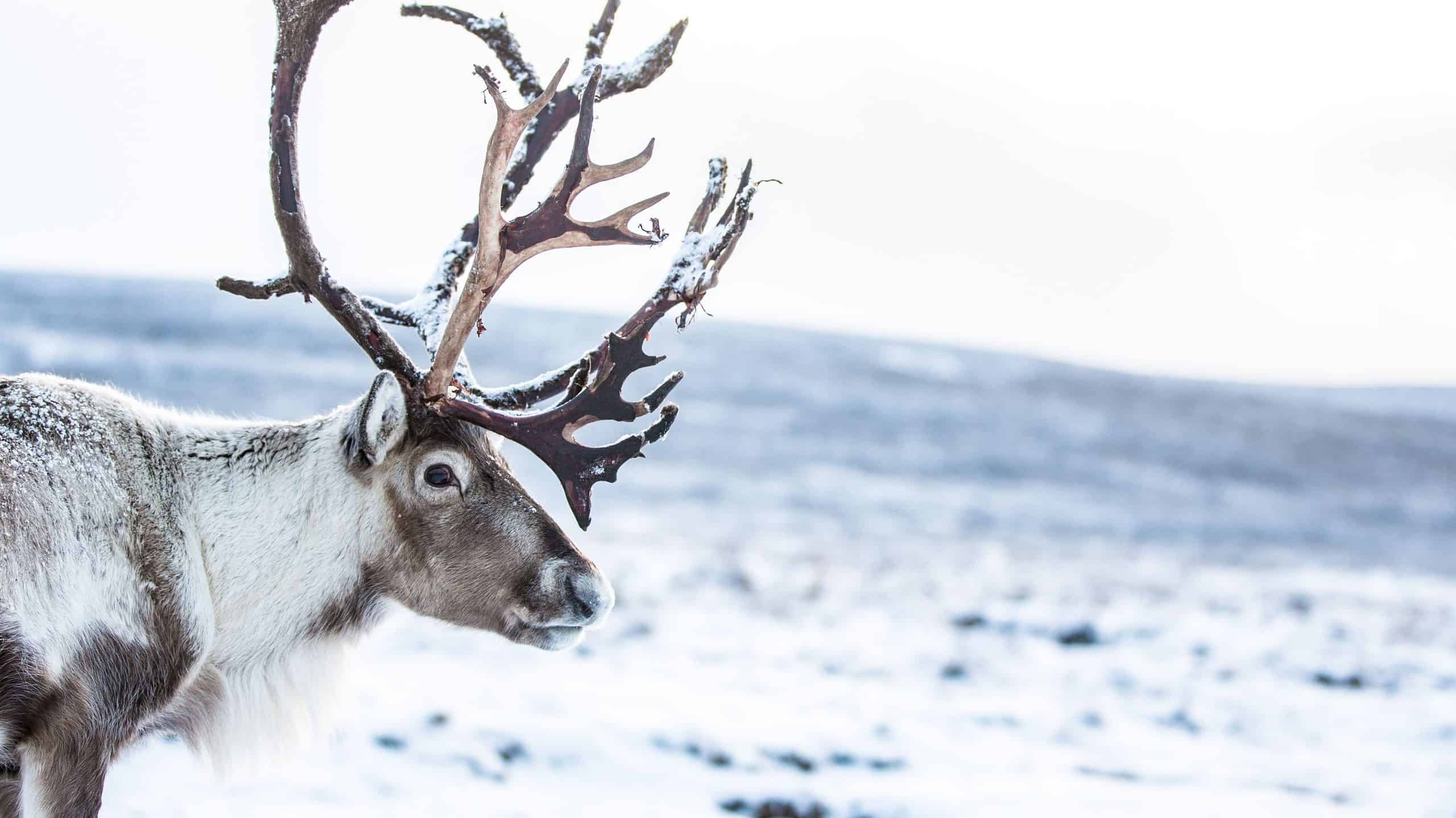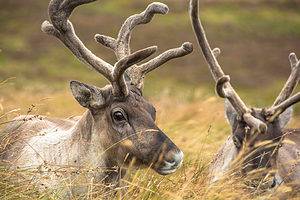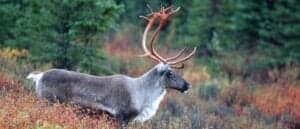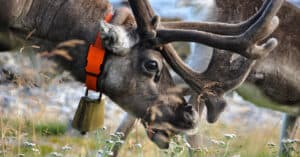Reindeer, Rangifer tarandus, are familiar hoofed animals that live in cold climates toward the North Pole. In many societies, children learn about reindeer from a very early age. This holds true even if they have never seen one in real life, because of their association with Santa Claus. People call reindeer by very similar names in several different languages. And their name has been essentially the same since ancient times. So, why are reindeer called “reindeer” and how did they get their name?
Origins of the Word “Reindeer”
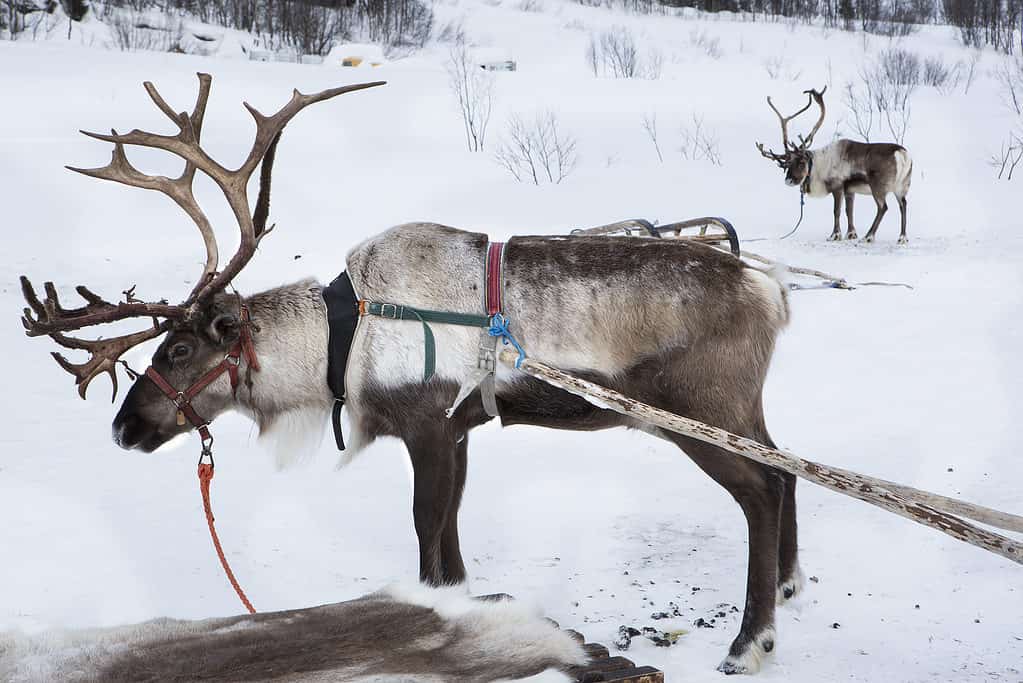
Although some reindeer live as domesticated animals, reins have nothing to do with their name.
©MARISINA/Shutterstock.com
You might assume that the name reindeer came from the words rein and deer, especially if looking at familiar pictures of reindeer hitched up to Santa’s sleigh on Christmas Eve. Although that assumption makes sense, the name did not originate in this way. In fact, the etymology of the word reindeer has nothing at all to do with reins.
According to linguists, reindeer actually came from the Old Norse word, hreindyri. This breaks down to two roots: hreinn, which means ‘reindeer’ and dyri, which means ‘animal’.
Modern Variations of Reindeer
One can find several variants of the name reindeer in modern languages, particularly the Germanic languages. In Norwegian, people call this species “reinsdyr”, while folks use the word “rensdyr” to describe the same animal in Danish. In Spanish, they say “reno” and in French they say “renne”. Meanwhile, in both German and Swedish, they use the word “ren”, and in Icelandic, they say “hreinn”.
Where Do Reindeer Live?
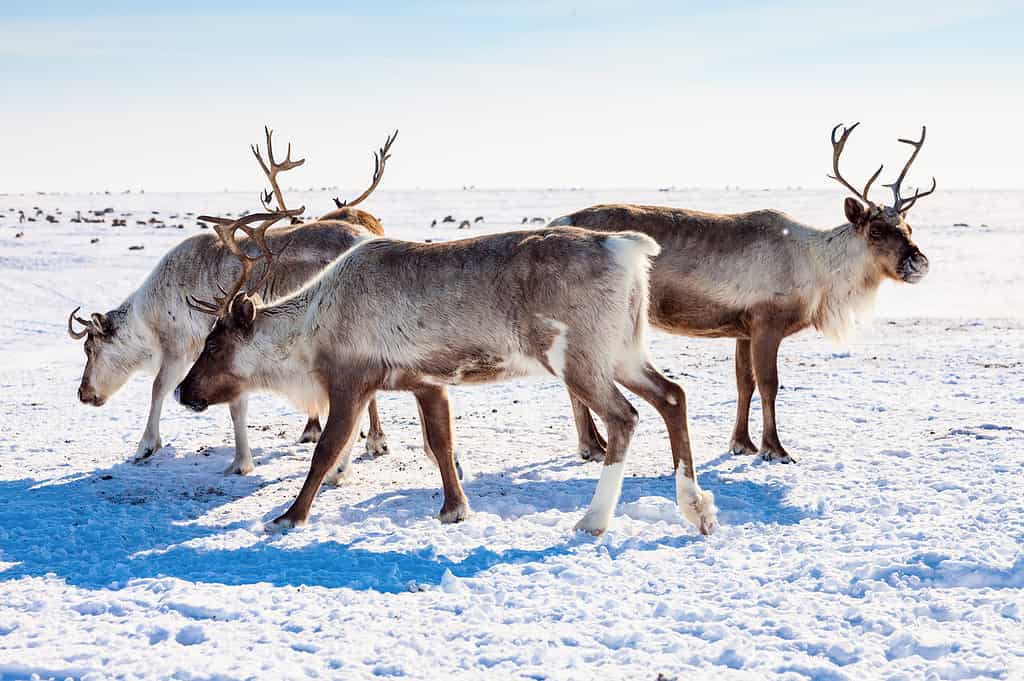
Reindeer, also known as caribou, live in the far north parts of North America, Europe, and Asia.
©iStock.com/Artpilot
Reindeer live in the cold, northern parts of the world, including Alaska and the far northern part of Washington, Canada, Russia, Mongolia, parts of the Netherlands, Iceland, and parts of Greenland. They live mainly in forests and grasslands between the 50th parallel north to the 81st parallel. Their range extends well inside the Arctic Circle, but not quite as far north as the North Pole.
Species that live mostly in the boreal forests have different qualities than those that live mostly in open areas. Their antlers have different shapes and sizes based on their habitat. Even their mating habits differ based on where they live.
Reindeer or Caribou, What’s in a Name?
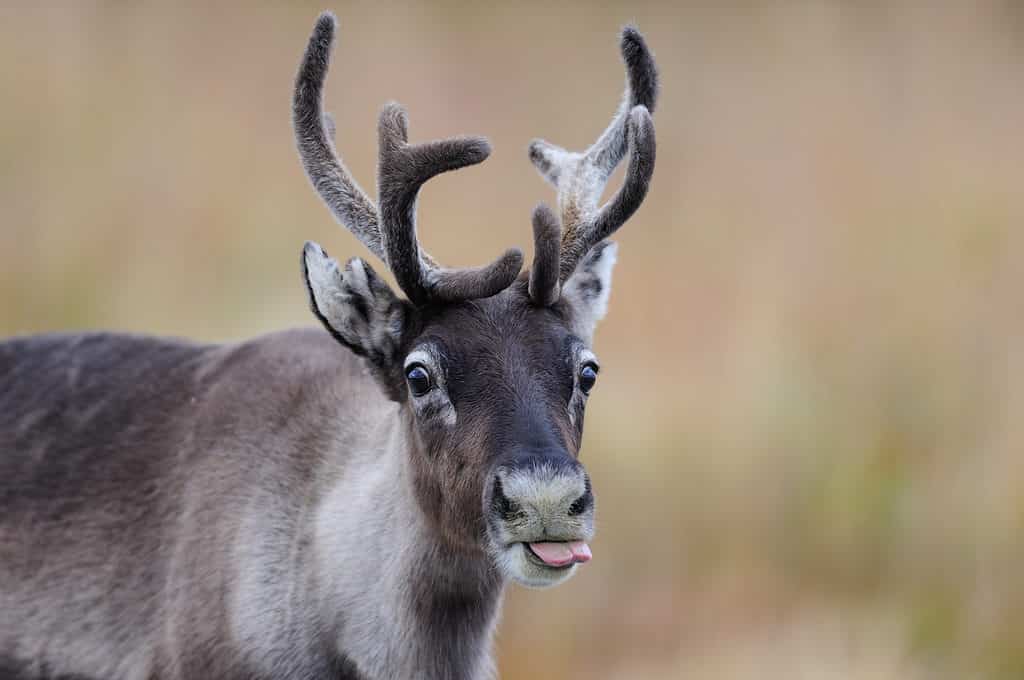
Is it a reindeer or is it a caribou? That depends mostly on where it lives.
©MM.Wildlifephotos/Shutterstock.com
Can you tell the difference between a reindeer and a caribou? If not, please do not feel bad. Reindeer and caribou are essentially the same animals with a different name. All reindeer and caribou species currently fall under the same species, Rangifer tarandus, and in one of more than a dozen different subspecies. The subspecies native to North America are called caribou, while those in Europe and Asia are reindeer.
Biologists have spent a lot of time over the past century or more, trying to determine which animals belong to which subspecies, and whether any of the subspecies should be recategorized as a species. Recent proposals, based on genetic studies, suggest regrouping the single existing species into at least six different full species, with subspecies placed under those designations. But for now, scientists list all known reindeer and caribou as subspecies of Rangifer tarandus.
Why Names Are Important
One reason that biologists have worked so hard to determine whether the caribou and reindeer of the world belong to one single species, or several different species, is conservation. The IUCN Red List of Threatened Species lists Rangifer tarandus as a single, vulnerable species under the name, reindeer. They currently estimate approximately 2.9 million individuals exist worldwide, down from about 4.9 million within the last 10 to 25 years. That equals an estimated decrease of around 40 percent across the board, but some of the subspecies face far more pressure than others.
Conservationists can increase efforts directed specifically at certain populations if scientists find evidence that a subspecies is actually a unique species and that it is threatened or endangered. Getting funding and support to help save an animal sometimes depends on the animal’s name, and whether it is a fully unique species on the brink, or just a floundering subspecies of an otherwise thriving species.
Reindeer, Caribou, and People
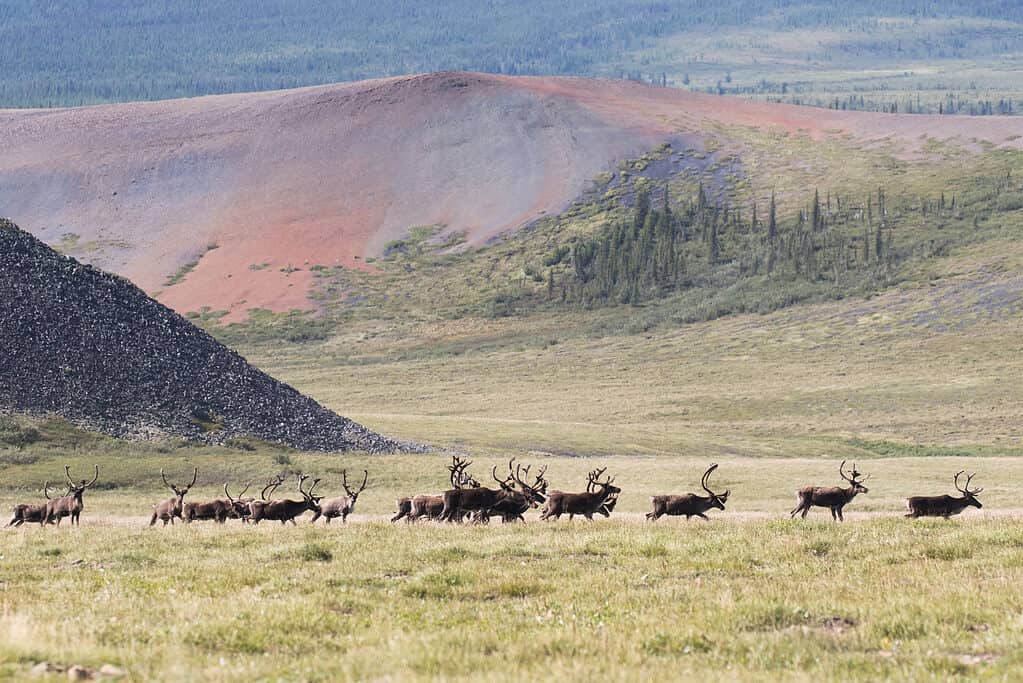
The
Porcupine
caribou has a close relationship with indigenous people in Canada.
©Jukka Jantunen/Shutterstock.com
Call them reindeer or call them caribou, these animals have had a close relationship with people for thousands of years. Some estimates indicate that certain indigenous people of North America have had a strong relationship with this species for roughly 11,000 years. And in Europe, reindeer herding existed up to 3,000 years ago, or more. People have long used reindeer and caribou for meat, as well as clothing, blankets, and tents. Parts of these animals even contribute to snowshoes, sleds, fishing nets, and tools. Beyond that, some indigenous people have a spiritual connection to the animals. Efforts to protect the reindeer and caribou of the far north are important, not just to the species, but to human populations as well.
Thank you for reading! Have some feedback for us? Contact the AZ Animals editorial team.

